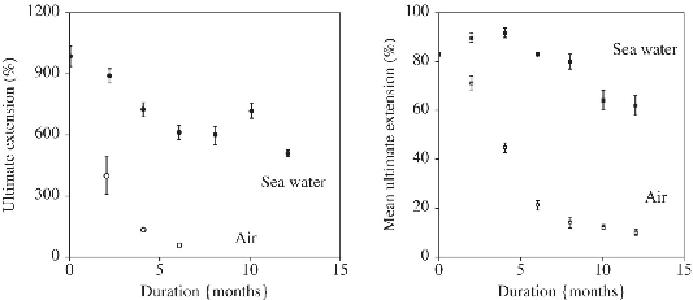Environmental Engineering Reference
In-Depth Information
Latex rubber balloons, though not made of plastics, still contribute
significantly to marine debris (O'Shea et al., 2014). Toy helium balloons
and the larger weather balloons are released into the atmosphere every day
(Whiting, 1998). As a balloon rises in air it expands as the air pressure
gradually decreases, and at a height of approximately 4-5 miles, these
bursts with the rubber falling back to Earth. Weather balloons rely on
bursting to recover the radiosonde equipment with atmospheric data
recorded during the ascent of the balloon. Where the balloons will fall is
difficult to assess; with greater than 70% of Earth's surface covered with
oceans, a large fraction of these invariably ends up in oceans. Latex rubber
balloons do biodegrade slowly in the ocean environment (Lambert et al.,
2013), but the rate of loss in mechanical integrity due to such degradation
or their rate of mineralization are not known. In an outdoor exposure study,
natural rubber latex balloons were found to lose approximately 94% of
their extensibility in air but only approximately 38% when exposed floating
in seawater for a 6 month period in Beaufort, NC (Andrady and Pegram,
1989a) (see
Fig. 10.2
).
Figure 10.2
A comparison of the rate of loss in extensibility of latex
rubber balloons in Beaufort, NC (left) polypropylene tape in Biscayne Bay,
FL (right) exposed outdoors in air and in sea water.
Source: Reproduced with permission from Pegram and Andrady (1992).

